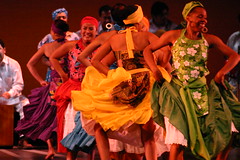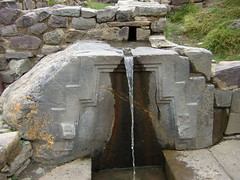Air quality in Lima has never been good, mostly thanks to the high humidity and fog. But when dictator Alberto Fujimori passed laws to allow second-hand ancient, deadly and heavily polluting cars to be imported from abroad, air quality took a massive hit. Though it never rains, grey clouds took on a hint of black, and a thick soot blanketed the city.
Category: "Travel and Places"
APEC 2008 comes to a close
As the security fences and blockades are pulled down, and life in Lima gets back to normal, Peru can be proud that it successfully held such a large scale international event. The numbers of delegates and the numbers of heads of state all in the capital city at the same time was unprecedented for the country, but despite Peru’s reputation for inefficiency everything went surprisingly well.
China’s Hu Jintao arrives in Lima
China’s President Hu Jintao arrives in Lima, is greeted by Peru’s Alan Garcia and taken in style to the Plaza de Armas and the Presidential Palace.
Lima ready for APEC leader’s conference
As the leaders of Australia, Brunei Darussalam, Canada, Chile, the People’s Republic of China, Hong Kong, Indonesia, Japan, South Korea, Malaysia, Mexico, New Zealand, Papua New Guinea, Philippines, Russia, Singapore, Thailand, Taiwan, the United States and Vietnam arrive in Lima, the city for a short time at least, is in the international spot light.
Cemetery of Chauchilla
Laying untouched for centuries, this isolated spot in the dry Nazcan desert was used as a place to bury and preserve the mummified dead of the Nazca culture. Since then, the countless hundreds of tombs found here have been pillaged and destroyed. What remains is at first a fascinating sight for visitors – bones, ceramics and cloth scattered across the sands, pieces of ancient fabric blowing around in the wind – but that fascination soon turns to despair as you realise the amount of precious historical information lost.
Lost city of Cahuachi
The Nazcan city of Cahuachi was a stunning and magnificent place. Stretching along the dusty hills above the Nazca River valley are an as-yet unknown number of pyramids and temples – a good number of those rolling hills are not at all natural features. Some estimates of the area the city covered are as much as 24km2 – bigger than even the famous Chimú city of Chan Chan.
The Nazca Lines
Etched into the barren rocky desert plains of of Nazca, in the region of Ica, is a mystery yet to be solved. Stretching for miles, and only visible from the air, are a series of lines, geometric shapes and figures that are 2000 years old. Created by the Nazca civilisation, their true purpose has yet to be determined.
Aqueducts of Cantalloc
The Aqueducts of Cantalloc, also known by the more hispanified Cantayo, are one of the Nazca civilisation’s greatest achievements – building them was a far more difficult task than creating the Nazca lines.
Makatampu
The pre-Columbian town of Makatampu stood on the outer edges of the city of Maranga, and as its name suggests, it was a tambo, or resting place, set in the scenery of fields irrigated by two artificial aqueducts. No longer standing – the complex was destroyed in the 1940s to may way for the construction of factories on the old hacienda Conde de las Torres – it was said to have been an important site.
A walk along the Costa Verde
I’ve said it before and I’ll say it again, there’s nothing nicer than a walk along the Lima’s Costa Verde on a sunny day. Big changes have been taking place over the past 5 years. The old historic but sadly decaying houses along the cliff front have been gradually pulled down and new apartment blocks built in their place, while the once ugly and unsafe cliff-top between the lighthouse in Miraflores and the district of San Isidro is now greener and wealthier than ever. Expensive apartments now overlook children’s play areas and green spaces with pristine pathways, benches, and flower gardens.
Día de la Canción Criolla… en Londres?? [Featured]
Ruins of Pachacamac
The history of pre-Hispanic Lima is deeply entwined with Pachacamac. Worshipped across the central Andes since before the Inca conquest, the powerful creator god Pacha Kamaq is even revered today, almost 500 years after the Spanish conquest by Catholics in Lima. Today this powerful being has taken shape as the Cristo Morado and has been absorbed into Catholicism, and just as he is today, this ancient figure was also known as the Lord of the Earthquakes.



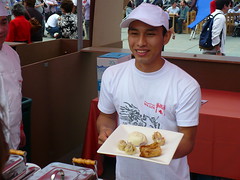
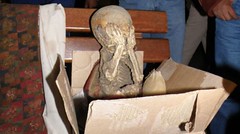
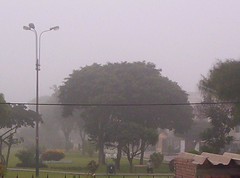

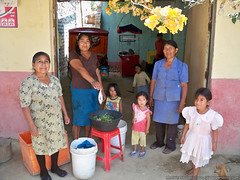
![The Streets of Cusco [Featured]](http://farm4.static.flickr.com/3425/3818103728_6d4e849cc9_m.jpg)
